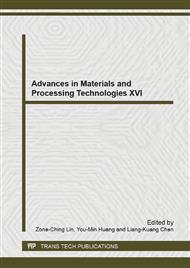p.98
p.106
p.114
p.122
p.130
p.138
p.146
p.152
p.161
Search for Rapid Quality Control of Ni-Cr-Mo Low Alloy Steels Using Multifaceted Approaches for Fracture Toughness Estimation
Abstract:
This report aims to illustrate some multifaceted approaches for estimating fracture toughness of high-strength Ni-Cr-Mo low alloy steels in order to search for a suitable methodology for their rapid quality control in industrial production. The chemistry, microstructure, hardness, tensile and impact toughness properties of the selected AISI 4335 grade steels from different batches of commercial productions were assessed by standard methods. Measurement of plane strain fracture toughness (KIc), dynamic fracture toughness (KId) and fracture toughness using chevron notched bend bar specimens (KIcv) have been done on the selected steels. The magnitudes of KIc depend on the amount of inclusions and tramp elements in different batches of production. The values of KId estimated by LEFM approach and KIcv are in reasonably close agreement with KIc values but the latter methodology indicates the potential to be an alternate approach. Comparative assessments of KId and KIcv values with respect to KIc values of the steels have been made using concepts based on fracture mechanics and inherent characteristics of test parameters.
Info:
Periodical:
Pages:
130-137
Citation:
Online since:
May 2014
Authors:
Price:
Сopyright:
© 2014 Trans Tech Publications Ltd. All Rights Reserved
Share:
Citation:


